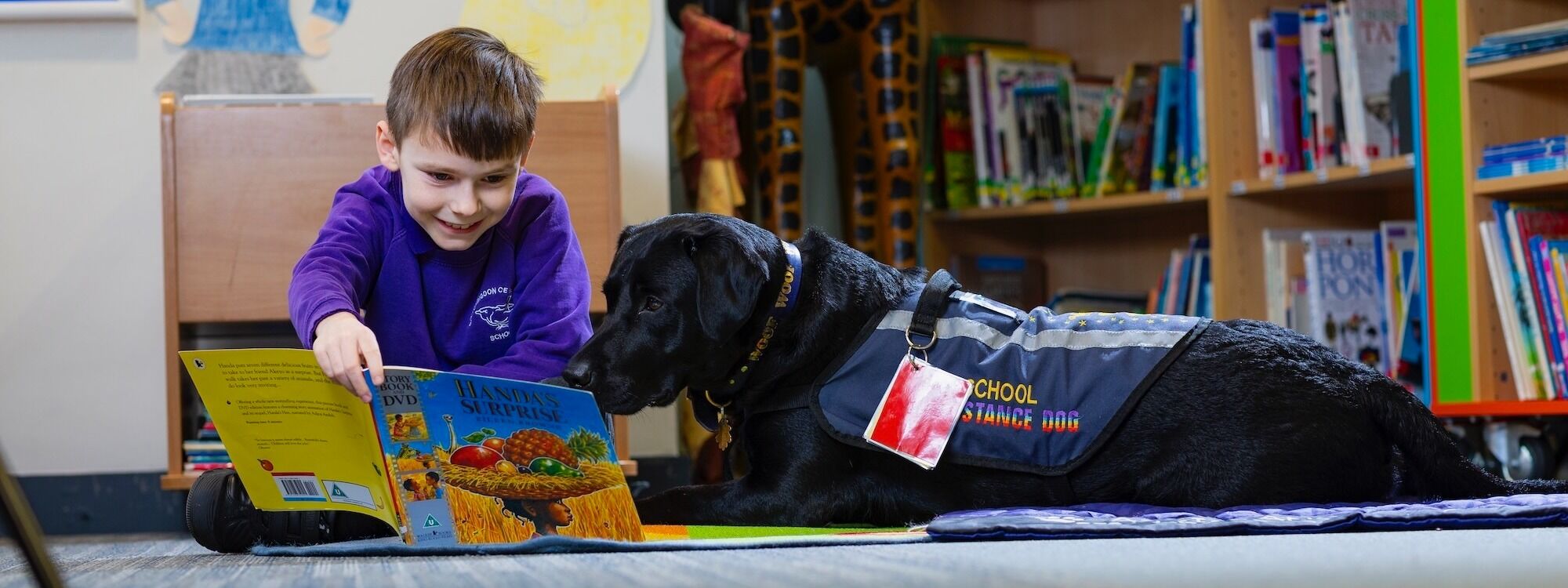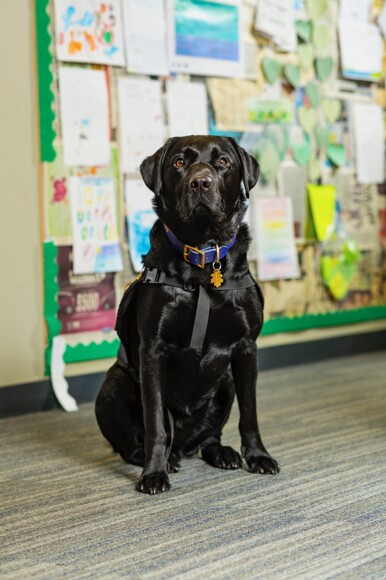
Who is Merlin?
 Merlin is a black Labrador, who is Bletchingdon born and bred!
Merlin is a black Labrador, who is Bletchingdon born and bred!
Born on 8th May 2021 he has visited school from a very young age. This means Merlin is a very calm yet sociable dog. He is very intelligent and enjoys meeting people. He has great instincts and knows if a child has had a bump or is feeling sad. Bletchingdon CE Primary has traditionally had a school dog – from Tess the Border collie to Digby the Labradoodle. However, Merlin is the first dog to undergo Assistance Dog training. As he is from Bletchingdon he regularly sees his mum, sister and aunty on play dates and walks around the village. He is a very special boy.
Follow Merlin on his Instagram page.
The Human-Animal Bond
"Merlin has helped me in situations I can find hard at times. Merlin has taught me by trusting someone (like he has with me) I can learn new things."
The Human-Animal bond refers to the strong positive interaction that exists between humans and animals.
The positive impact of this bond is considerable and backed up by scientific data, case studies and hard research, all validating the therapeutic effects of human-animal relationships. These benefits can be emotional, psychological, and physical.
This unique non-judgmental bond can help to:
Merlin’s Training
We are aided in his Assistance dog training by Canine Assisted Learning -
Canine Assisted Interventions - Canine Assisted Learning
Four staff handlers work with Helen our CAL trainer. The training programme for schools provides a safe and effective means for animal assisted interventions in school. The programme not only focuses on the training of the dog but of the school handler too. This ensures all necessary health and safety considerations are met this includes understanding of complex canine behaviour in a learning environment, safe and effective implementation of interventions and crucially, the welfare and safety of the dog, children and everyone involved with the programme.
The History of Animal-Assisted Therapy
The earliest documented studies into AAT took place in 18th century England when animals were used as a socialisation medium for mentally ill patients, “awakening the social and benevolent feelings”. The animals were recognised as non-judgmental, calming influences that helped to reduce stress and anxiety.
Sigmund Freud believed that dogs have a ‘special sense’ that allows them to judge a person’s character accurately—his dog attended all his therapy sessions. Freud believed that the animal’s presence had a calming influence on all his patients, especially the children. Similarly, in the early 1960s, Dr. Boris Levinson reported a new step forward in animal-assisted therapy when he found that withdrawn and uncommunicative children would interact more encouragingly whenever he brought his dog, Jingles, to their therapy sessions.
“Merlin helps people to calm down when full of emotions.”
“Merlin is kind, helpful and comforting when I’m sad.”
“Merlin is an important piece of the Bletchingdon puzzle”.
"I am thankful for Merlin as he loves me so much."
